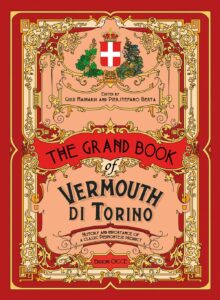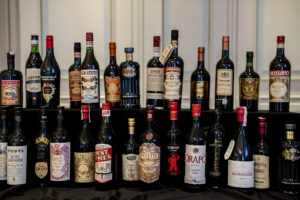
A selection of the Consorzio’s vermouths
Vermouth is an aromatized fortified wine, flavored with various roots, barks, flowers, seeds, herbs and spices. The most usual herbs are yarrow, chamomile, hyssop, marjoram, sage, and thyme; the spices: cloves, cinnamon, cardamom, coriander, nutmeg, juniper, ginger, and labdanum. A similar drink dates to the Chinese Shang and Western Zhou dynasties (1250-1000 BC), so probably the oldest alcoholic beverage in the world except for ancient Egyptian beer.
In Europe vermouth’s earliest recipes date from about 400 BC in ancient Greece. Its most popular original ingredient was and remained until the 18th century wormwood believed to be an effective treatment for stomach disorders and intestinal parasites.
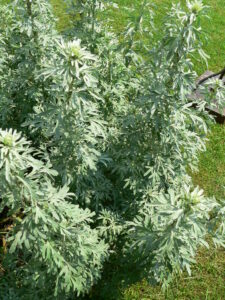
Artemisia absinthium, until the 20th century an ubiquitous ingredient of vermouth
Commonly imbibed in Hungary and Germany during the 15th and 16th centuries, the name “vermouth” is the French pronunciation of the German word Wermut or wormwood. Also during the 16th century, an Italian merchant named D’Alessio began producing a similar “woodworm wine” with additional botanical ingredients in Piedmont competing with brands developed shortly thereafter in nearby southeastern France and still rivals today.
Modern versions of vermouth were first produced in the mid-to-late-18th-century in Turin, at first as pharmaceutical digestive remedies, but soon served in the city’s fashionable cafés as an aperitivo or appetite stimulator. Although still imbibed solo in Italy, France, Spain, and Portugal, in the late 19th century vermouth became popular and still is with bartenders as a key ingredient for cocktails especially the martini, a favorite of Ernest Hemingway, Humphrey Bogart and fictional James Bond; Manhattan; Roy Rob; and Negroni. Almost always made with a white wine base (originally Moscato and Cortese), vermouths (75% wine and herbs, 17-22% ABV) can be extra dry white, dry white, sweet white, red, amber, and rosé or bitter depending on their amounts of sugar, alcohol, and choice of other ingredients. The production process has five steps: 1) infusion of the ingredients (alcohol, herbs etc, wine, and sugar for 15 to 20 days; 2) mixing these ingredients; 3) the mixture must age in steel barrels for several months and then be 4) filtered and 5) bottled.
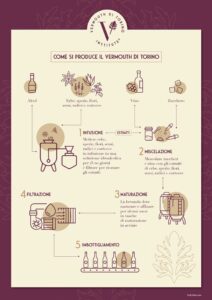
Vermouth’s production process
The Cinzano family began their production of sweet white vermouth in 1757 in Turin. Seven years later, Martini % Rossi was founded. Today it’s the top-selling international brand of vermouth, producing both dry and sweet vermouths, but is best known for its Rosso. Cinzano and Martini% Rossi both also produce rosé vermouths, which are mainly distributed in Italy and France. Another early Piemontese manufacturer was Antonio Benedetto Carpano who in 1786 decided to aromatize Moscato with an infusion of spices and wormwort. (This ingredient was prohibited in the early 20th century because believed to cause hallucinations and madness, but is still sometimes included in artisan products). Today Carpano’s descendants still produce several brands including Punt e Mes, a deep red vermouth with sweet and bitter flavors, and the Antica Formula Brand, a bitter, fuller-flavored version. In 1982 Distillerie Fratelli Branca of Milan bought 50% of the Giuseppe B. Carpano Company and acquired the company outright in 2001.
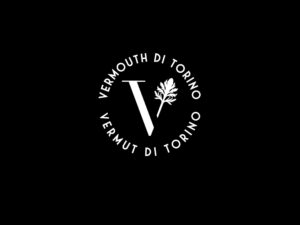
Logo of the Consorzio del Vermouth di Torino

Antonio Benedetto Carpano
In 2019 the Consorzio del Vermouth di Torino was established to protect, promote and valorize local vermouths. Today its members count 34 producers, who produce annually some 6 million bottles sold in some 82 countries worldwide with Italy as its largest client followed by the United States, thirdly the United Kingdom, and fourthly South America, in particular Argentina, because of the huge number of piemontesi immigrants. Each brand uses c. 30 herbs and spices, 60% of which come from all over the world so yes, vermouth is torinese, but also international.
Beginning in January 2023 until December 31, 2025 the Consorzio is sponsoring L’Ora del Vermouth di Torino. Click on www.turismotorino.org and then scroll down to locali aderenti (participating establishments) for recommendations of where best to enjoy Turin’s typical aperitivo.
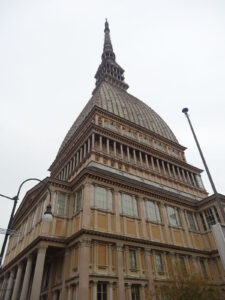
La Mole Antonelliana- the view from its roof is breath-taking
After a visit to Turin’s Egyptian Museum, second only to Cairo’s collection, and its breath-taking Museum of Cinema (La Mole Antonelliana, the spike-roofed symbol of Turin, originally built (1863-89) to be the city’s Synagogue until the community ran out of funds), I suggest heading to these four Vermouth bars.
My first choice is Bar Cavour at the super-elegant 3-Michelin-star restaurant Del Cambio, founded in 1757 and a favorite of Camillo Benso, Conte di Cavour, where everyday a table is still set for this protagonist of the Unification of Italy (Piazza Carignano 2).
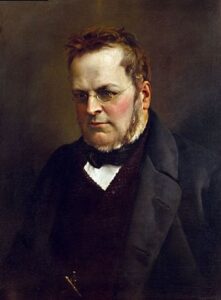
Camillo Benso, Conte di Cavour
Another favorite of Cavour’s was Bar Stratta (Piazza San Carlo 191) founded in 1836 as a confectionery. Still another benchmark is the Caffè Mulassano (Piazza Castello 15), owned by torinesi Angela and Onorino Nebiolo from 1925, when they returned home from Detroit, until 1937. It’s said that Onorino invented the tramezzino (triangular) mini-sandwich. Farther afield, on the Po’s right bank, at Barz8 (Corso Moncalieri 5) Salvatore Romano and Luigi Iulia specialize in cocktails made with over 40 labels of vermouth.
The Consorzio’s 2023 plans include creating a glass perfectly-designed for a vermouth aperitivo; promotional events in Toronto, Brooklyn, New Orleans, London, Berlin, and Athens; and in June La Settimana del Vermouth di Torino, an educational in Torino for barmen from around the world. In 2025 the Consorzio will open a Vermouth Museum in Asti.
At home, the Consorzio advises, vermouth should be kept in the refrigerator and served cold. Once the bottle is opened, it should be consumed within three months.
For a detailed history of vermouth, purchase The Grand Book of Vermouth di Torino by Giusi Mainardi and Pierstefano Berta. 50 euros.